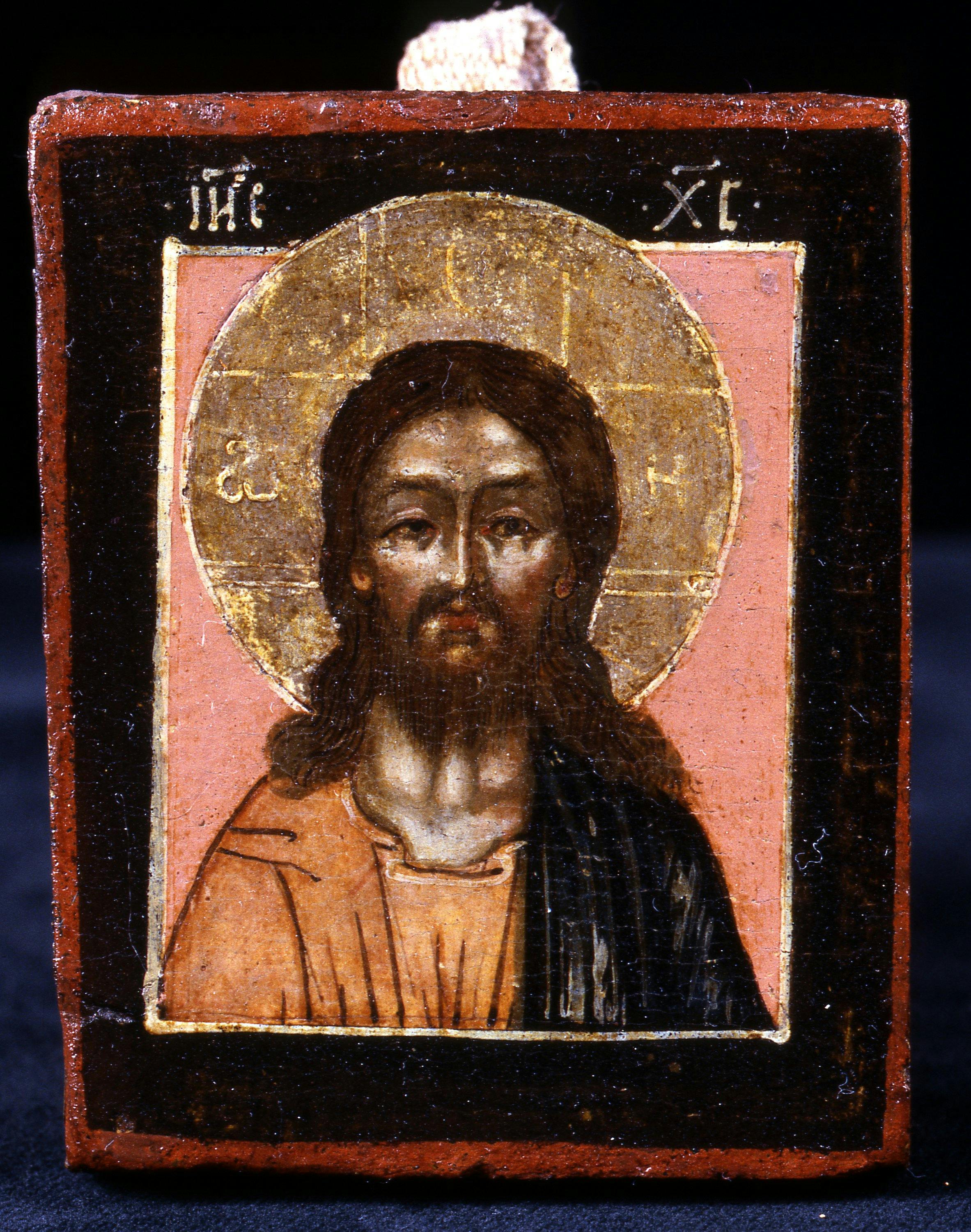Deësis (Mother of God; Blessing Christ; St. John the Baptist)
Central Russia
The Virgin and St. John the Baptist appear alongside the Blessing Jesus Christ and intercede for the salvation of humanity. The composition of this icon was very common in Eastern Christianity: it was referred to as Deësis, a Greek term that means supplication, intercession. The iconographic variant presented here, with the effigies only depicted as far as the shoulders rather than as full or half figures, was particularly popular in the late 17th century. The figure of Christ, portrayed in a rigid, frontal pose, with strands of hair falling symmetrically, appears to have been influenced by Flemish prototypes, commonly found in Russia from the end of the 17th century. St. John’s attitude is extremely unusual: he is looking straight at the spectator rather than at Christ.
The three panels probably formed a portable icon to be used when travelling, perhaps originally held together by a metal frame that allowed the side panels to be folded in, making it easier to carry. They were painted by a provincial master who imitates the naturalistic style of the masters of the Kremlin Armoury in Moscow, and perhaps also the author of the icon with Christ Pantocrator (1890 no. 9318). Although the pink background is rather unusual, it recurs in icons painted towards the middle of the 18th century, confirming the date attributed to the triptych.
